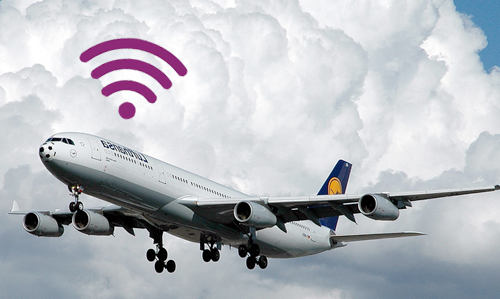Within the airline industry, Digital Marketing plays a key role to engage customers, deliver value and save cost. In the recent years many airlines caught up with the new digital marketing trends to expand their channels of communication. Social media is becoming a marketing machine and airlines have taken advantage of this. Singapore Airlines, Etihad Airways and Emirates have benefited from social networks like Twitter, Youtube and Facebook.
As if this were not enough, Airlines are willing to go further than this. WhatsApp is one of the leading online communication apps with more than 700 million active users and it could provide an ideal platform to communicate directly with passengers before and during their day of travel.
According to Hayden (2014) mobile messaging is one of the most effective ways to reach customers as is the most direct channel to reach customers, while also being the most immediately received and seen by everyone to whom a message was sent. This is the reason of why Facebook purchased WhatsApp for $19 billion. Because the app service allow users to send mobile messages anywhere globally without SMS fees. Hayden also emphasized the ease and cost of most mobile tactics and explained that these tactics require low initial investment and lacks the development and management burdens associated with common technologies.
The Dutch LCC Trasavia airline has identified these benefits and has decided to use its resources to give it a try. Last year, the airline announced a experimental run in the use of the instant messaging service WhatsApp for customer service communication with select members of the airline’s Flying Blue programme.
Customers could ask questions via the messaging app, such as making inquiries about an existing booking, how to check in online or hand luggage rules. It aims to respond to questions within an hour and the airline can be reached via Whatsapp 7 days a week between 8am and 10pm.
Says Roy Scheerder, commercial director at Transavia, “We want everyone to make it as easy as possible to get in touch with Transavia. We see WhatsApp as nice addition to the already existing possibilities such as Facebook and Twitter.” […] “Because of the accessibility of WhatsApp customers expect an even quicker reaction than via Twitter and Facebook.”
This seems a very possible to be put in practise on mainland but, is it possible to be implemented in-flight?.
More and more airlines offer WIFI service to their passengers. However, not every flight has the access as about only a 24% of international flights give some chance of wifi connectivity. This could be a temporary barrier .In July 2013, Routehappy did a comprehensive inflight Wi-Fi research. In the year and a half since, it was found that globally Wi-Fi hotspots have increased 271% since the beginning of 2013.
Another barrier is the cost offering WiFi to passengers that they might not be willing to pay. According to analysts, inflight WiFi is costly because airlines see it more as a revenue generator than a perk for passengers. However, two budget airlines, Norwegian and JetBlue, are two of the few who offer free wifi for every passenger on board. By offering in-flight free wifi, the airlines can benefit differentiating themselves and win business away and win market share based on the passenger experience. As the new trend is showing the world “what is going on right now” through our social networkings, airlines could take this as an advantage and benefit from free advertising. Passengers could share in real time post a selfie from their seats, or Instagram their flight meal.
Considering all these digital marketing benefits, airlines should consider to offer free WI-FI inflight. WhatsApp works through internet connection and airlines not offering WI-FI in flight will not benefit from this. Furthermore, just a small segment of travellers is willing to pay for WI-FI inflight service, meaning that even if the airlines offer WIFI service they will not be able take a full advantage of WhatsApp benefits unless this is for free.
Hayden, Tim. The Mobile Commerce Revolution. Print.











